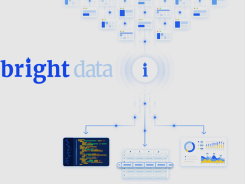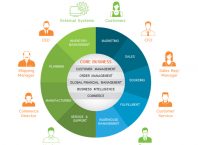Big data. Ahh…! How it can assist insurers? Just imagine! You sort through thousands of data while insurance claims handling, which involves hand-written notes, adjusters, false data, and the information from the claims management system. Does the time and efforts you spend on claims processing is substantial?
Let’s face it. With so many claims application, eventually, your adjusters don’t have enough time to evaluate each claim precisely. Due to lack of time, making an informed decision is not possible as in the hustle to meet deadlines; they might miss out vital information in the application. Now you might be thinking how adjusters randomly settle claims? Well, they make decisions on the basis of their experience, intuitions and accessible information available at that moment.
Therefore, embracing the latest technology has become a common trend in the insurance sector as it is revolutionizing the operational processes like never before! A survey was held by Deloitte that clarifies the significance of the latest technology across the industry. Insurers are spending on AI and data technologies, which are likely to rise 48% every year, touching $1.4 billion by 2021.
Thus, big data analytics are playing a significant role in the insurance industry to streamline the claims management process by working closely with the adjusters. This analytics alerts the adjuster if any claim requires close assessment or need to be prioritized and a lot more. Insurers can now take a sigh of relief with the advent of big data analytics.
So I have outlined a few areas in the claims management process where big data analytics makes a big difference:
Fraud investigation
Everyday insurers find one fraudulent claim among 10, which leads insurers to massive payouts. However, there are tools available in the market to make the claims management process seamless and error-free. But the sad part is, fraudsters easily understand and manipulate rules. But in big data, the predictive analysis uses a combination of regulations, text mining, rules modeling, database searches and give accurate reporting to detect frauds quickly that too at each step of claims processing.
Therefore, big data analytics can be your perfect partner for detecting fraudulent claims in no time, saving you from losses.
Keenly resolves subrogation cases
If you have messed data that involves police data, medical records, and adjuster notes, then you may lose out opportunities for subro. However, the text analytics searches quickly from this unstructured data and find out the phrases that typically specify a subro case. If you successfully find subro opportunities, you can maximize loss recovery and reduce loss expenses.
Quick claims settlement
In order to keep the costs minimal and ensure quality, insurers typically prefer to settle claims promptly by implementing faster processes. However, if you settle claims with the speed of air, you may end up making costly mistakes like overpaying your customers.
Any insurer who has been through the hell of home payment affected by natural disasters understands this factor. But, analyzing each claim and claims history meticulously, can help you pay appropriately. Eventually, quick claims settlement will augment customer satisfaction ratio.
Predicting loss reserves
Whenever the customer claims for its mishap at first, an insurer cannot predict the duration of the claims processing. However, accurate calculation of loss reserves and claims prediction is highly-important, mostly in case, of long-term claims processing such as worker’s compensation or liability, etc.
In such a scenario, analytics are of great support to the insurers as they easily calculate loss reserve by evaluating the loss with a similar case. Furthermore, whenever you update the insurance claims data, analytics immediately reassess the value you need to pay in the future.
Enable you to focus on core activities
Putting your adjusters’ workforce on complex claims makes sense, but you know claims allocations are based on data, and if your data is inaccurate, you may face delays in claims settlement as the right claim could not reach the potential adjuster at the right time, hurting your client’s expectations.
But with the help of data mining techniques, data is automatically clustered and grouped according to their characteristics allowing you to attain, prioritize and assign the claims to the most experienced adjuster based on loss type. And the surprising part is- claims sometimes are automatically settled and arbitrated.
Litigation process
Do you know a considerable portion of an insurance company’s loss adjustment expense ratio goes to disputed claims? However, insurers can use analytics to calculate litigation inclination score to recognize, which claims are more likely to result in a lawsuit. This will enable you to hand over the claims to superior adjusters who can settle the claims quickly and in lower prices.
Bottom line
Why are insurance firms using big data analytics? Insurers are striving hard to differentiate themselves from other businesses and adding analytics to the claims. Lifecycle will result in better ROI along with cost-saving benefits. Lastly, as the adage goes “A 1% improvement in the loss ratio for a $1 billion insurer is worth more than $7 million on the profitability”.
























